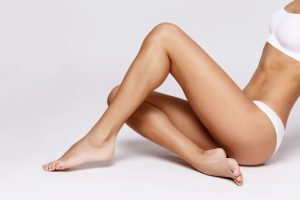Home/Blog / Answers to the Top 4 Questions About Fat Grafting
Answers to the Top 4 Questions About Fat Grafting
Not sure if fat grafting is right for you? To help you decide, we’ve provided some helpful answers to some of the most frequently asked questions about fat grafting:
What is fat grafting?
 Autologous fat grafting involves removing unwanted fat from one area of your body and injecting it in a different area. Autologous means that the fat comes only from your body. During this surgical procedure, Dr. Steven Holzman uses liposuction techniques to remove pockets of unwanted excess fat—usually from the inner thighs, lower abdomen, or flanks. This fat is then purified and injected into an area of the body where more volume is desired.
Autologous fat grafting involves removing unwanted fat from one area of your body and injecting it in a different area. Autologous means that the fat comes only from your body. During this surgical procedure, Dr. Steven Holzman uses liposuction techniques to remove pockets of unwanted excess fat—usually from the inner thighs, lower abdomen, or flanks. This fat is then purified and injected into an area of the body where more volume is desired.
Dr. Holzman utilizes the Revolve™ system to process the fat he harvests for this procedure. In a single closed device, the Revolve™ system washes the fatty tissue that has been removed via liposuction and separates the desired fatty tissue from unwanted fluids and contaminants. The process ensures that the fat is purified and is easy to transfer to a syringe. Dr. Holzman then carefully and precisely injects the volume-enhancing purified fat into the targeted area(s).
When is fat grafting a good treatment option?
Fat grafting was first used in breast cancer reconstructions as a way to address contour irregularities (as a result of tumor removal) that were difficult to treat. Later, fat grafting was used following mastectomy with implant-based breast reconstruction, to soften the areas around the implants for a more natural appearance.
The use of fat grafting has now expanded to include enhancing volume in breast augmentations and breast lifts (mastopexy)—two surgeries that are popular in “Mommy Makeovers.”
Fat grafting during breast revision surgery helps produce a smooth contour after the contracted capsule has been removed and the new implant has been placed.
More recently, fat grafting has been used to provide a longer lasting fullness for facial contours as an alternative to dermal fillers.
Why would I consider fat grafting?
Fat grafting uses your own body’s fat to enhance areas that lack volume, or to improve the contours for a more natural appearance. Your body is less likely to reject your own fat cells, so there is less chance of having a foreign body reaction in the areas that receive fat grafting.
What are the risks associated with autologous fat grafting?
Some common risks and side effects of fat grafting include:
- The fat cells injected into the treatment area may not survive.
- Multiple treatments may be necessary to achieve desire volume and appearance.
- Injected fat may be absorbed by the body.
- The fat may liquefy in the breast tissues, resulting in a cyst or calcified area.
- Fat grafting may produce undesirable scarring.
- Areas of the breast that have been grafted may show changes on a manual breast exam and/or on mammography, potentially leading to the need for further testing to determine if the areas are cancerous.
- Grafted areas may cause asymmetry, tissue lumps, bleeding, or scarring.
- Autologous fat grafting is not recommended for patients with diseases that are associated with poor wound healing, nor is it recommended for patients who are not in good general health.